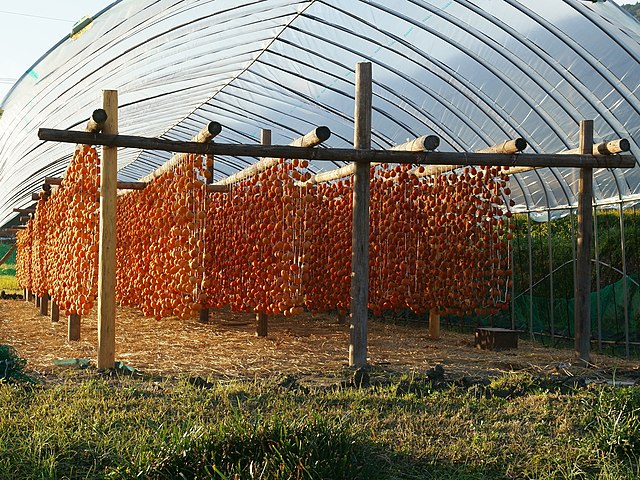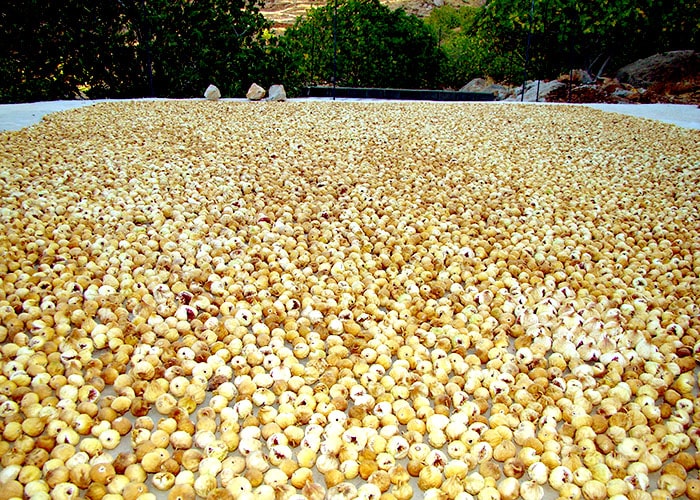- 한국어
- English
- 日本語
- 中文
- العربية
- Español
- Français
- Deutsch
- Pусский
- Tiếng Việt
- Indonesian
By Honorary Reporter Solaleh Emami from Iran
Photos = Wikimedia Commons (thumbnail: Flickr)
Dried persimmon, known as gotgam in Korean, is a sweet and chewy treat that frequently appears at traditional ceremonies, particularly as symbols of respect and gratitude to ancestors offered at the traditional rites charye. The fruit is also a must for Seollal (Lunar New Year) and Chuseok (Korean Thanksgiving), symbolizing prosperity and good fortune.

Drying racks for gotgam
The process of making gotgam is both an art and a labor of love. Fresh persimmon is peeled, hung on strings and left to air dry over several weeks, often in open-air settings. Honed over generations, this method allows the fruit's natural sugars to concentrate, resulting in a richly sweet and chewy texture.
My personal journey with the fruit began when I first saw one in a K-drama. Intrigued, I decided to try making it in Iran. Following the traditional method, I peeled fresh gotgam, strung them up and allowed them to dry naturally.
The result was a delightful success, but what struck me most was the similarity of this practice to the traditions of Iran. The process of preparing and eating dried persimmon resonated deeply in reminding me of how Iranians prize dried fruit like figs and dates on special occasions.

Making dry figs
The cultural prominence of gotgam in Korea has a parallel in Iran's tradition of dried figs, particularly during Yalda Night, typically falls around Dec. 21-22 of each year to celebrate the winter solstice. On this longest night of the year, Iranian families gather to share stories, poetry and food, with dried figs playing a significant role.
Symbolizing abundance, the figs are cherished for their natural sweetness and rich texture. Similar to gotgam, they also symbolize cultural heritage.
Dried persimmon is more than just a snack in Korea, it symbolizes autumn, tradition and community. When compared with Iran's dried figs, particularly in the context of Yalda Night, the universal human practice of preservation shines by showing both cultural expressions unique to both countries and shared values.
msjeon22@korea.kr
*This article is written by a Korea.net Honorary Reporter. Our group of Honorary Reporters are from all around the world, and they share with Korea.net their love and passion for all things Korean.